ETFs are a great way to invest in a basket of stocks or other assets while paying a low fee. But many investors want to know how many ETFs should I own to keep my portfolio balanced. Let’s figure it out.
About ETFs
Exchange traded funds (ETFs) let traders invest in multiple securities as a single unit without buying each stock separately.
ETFs invest based on specific objectives. They could just be following a market index, or they might be created based on an industry (like an ETF of only tech stocks).
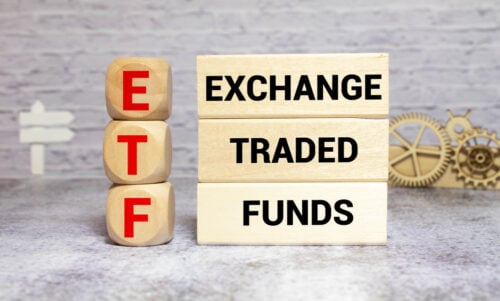
For example, the S&P 500 ETF puts the investor’s money in the 500 stocks that make up this index. This is an example of a “Passive ETF.”
On the other hand, there are active ETFs that don’t track market indexes like the S&P 500; they instead bring in portfolio managers to create a customized bouquet of stocks.
ETFs charge a fee for managing the buying and selling of the group of stocks in their portfolio, which is commonly known as the expense ratio.
A 1% expense ratio implies a $10 fee for every $1,000 traded. Most ETF expense ratios are below 1%.
ETFs vs Mutual Funds
ETFs are traded on stock markets, are mostly passive, and don’t require a minimum investment.
In contrast, mutual funds can only be bought through the managing company, are actively managed by fund managers, and most need a minimum dollar investment.
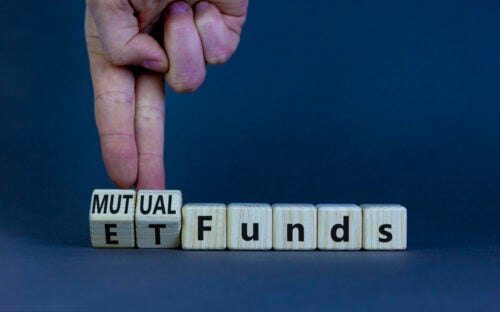
Investors often get confused because both methods allow them to buy a basket of securities and bonds in a single go.
However, that’s where the similarities end.
ETFs are like buying a set of stocks for yourself, whereas mutual funds are like pooling money from many investors to trade in stocks of a certain type.
Where can you buy ETFs and mutual funds?
ETFs are available on the stock markets; traders can easily buy and sell them there. Mutual funds can only be bought from the company that issues them.
ETFs trade just like other securities, so their price moves up or down throughout the day. A mutual fund’s net asset value changes only once a day.
All investors can buy or sell the mutual fund at that price point for that day.
Passive vs active
Most ETFs are passive; they simply mimic the group of stocks that make up a market index, like the S&P 500. The majority of mutual funds are actively managed by fund managers.

Traders can buy a single ETF stock. There is no minimum investment required.
Cost of trading
Mutual funds usually have a minimum entry point and aren’t traded in whole units. An investor can buy or sell fractional amounts of mutual funds based on their net asset values.
Trading ETFs involves two kinds of costs:
Explicit, such as trading commissions and operating expense ratios
Implicit, such as the difference between their buying and selling price
The difference is called the “bid-ask spread,” and it is the cost of making transactions on the stock market.
Mutual funds don’t have such trading commissions or bid-ask spreads because they are not traded on the stock market.
But investors may have to pay operating expenses, management fees, sales loads, redemption fees, and other costs when trading them.
Who are ETFs and mutual funds meant for?
ETFs are perfect for active investors who like to manage their investments directly. They can set up intraday trades and even buy futures and options on ETFs.
Mutual funds take away the work of actively managing the portfolio. They are perfect for investors who want high returns but don’t have the time to manage their money directly.
Instead, you can set up a specific amount to deposit each month or week in a mutual fund. Then the fund managers decide which stocks to buy or sell.
Are ETFs Good for Beginners?
Yes, ETFs are one of the best ways for beginners to dive into the stock market. This is because they let investors enter into a diversified portfolio of stocks at a low transactional cost.
Diversification is a wise practice because it reduces the risk for an investor.
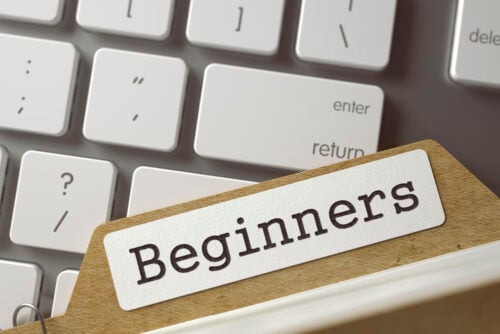
Suppose a beginner investor wants to get in on the tech boom and starts by investing in only one or two tech stocks.
One big regulatory change, company scandal, or even a poor quarterly result can bring down the stock price.
So balancing out investments with some old economy stocks that give steady, but consistent returns could protect a portfolio.
Most ETFs track certain market indexes, which are themselves made of several stocks. Therefore, the likelihood of a very steep drop in their price is much lower than trading individual stocks.
In a nutshell, ETFs help investors follow the age-old saying: never put all your eggs in one basket!
Moreover, unlike mutual funds, ETF investing has lower fees since there are no fund management fees, redemption fees, or sales loads.
Do ETFs Pay Dividends?
Yes, many ETFs offer regular dividends. A dividend is easy to identify if an ETF pays one because, in most cases, it’s mentioned in the ETF’s name.
If you are unsure, just check for the words “dividend yields” or “distribution amount” in the ETF’s fund information.
ETF dividends can be cashed out or reinvested. Reinvesting lets the investor get the benefit of compounding over time, which can be a very effective way to grow money.
Should I Own Multiple ETFs?
Yes, it makes sense to have multiple ETFs in your portfolio. Diversification reduces risk and shields the investor from market volatility.
Now, you might be thinking that ETFs are already diversified, so why is buying one ETF not enough to mitigate risk?
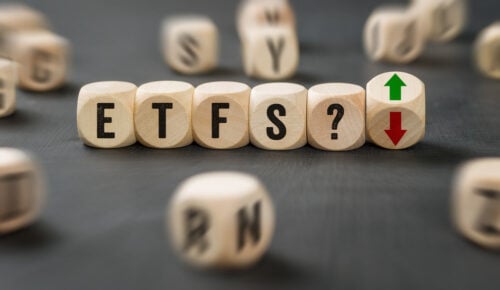
The answer is that there are other types of risks in investing that need to be balanced to keep investments safe.
For example, it is critical to have an investment portfolio spread across asset classes (equities, bonds, commodities) and geographies (developed vs emerging markets).
If investors only put money in one type of fund, there is a risk that they might get hit because the particular asset class or geography experiences a big market shock.
For example, if you put money only in a stock fund, it might cause a loss if the stock markets were to suddenly fall (like they did in the 2008-09 crisis).
But if that same money were to be split into ETFs across stocks and commodities like gold, the total portfolio loss could be reduced. This is because precious metals gain when stock markets crash.
However, while some diversification is helpful, too many ETFs in the portfolio might lower returns. As such, investors should carefully balance the number of ETFs in their portfolio.
How Many ETFs Should I Own?
Most analysts agree that small investors should have 4 to 5 ETFs in their portfolio. For larger portfolios, 5 to 10 ETFs would be enough.
However, as we discussed earlier, the important factor is the number of asset classes and geographies covered, not the count of ETFs.
ETFs can be of many types:
- Equity ETFs
- Bond ETFs
- Gold ETFs
- Index ETFs
- Market-focused ETFs, and so on
By choosing asset allocation carefully, you may not need more than 4-5 funds to create a diversified portfolio.
Is 15 ETFs Too Much?
Yes, 15 ETFs is probably too much for a small investor. Since these funds are already diversified in their particular asset class, it does not take more than 5-10 ETFs to get ample diversification.
Remember, too much diversification can also reduce returns.
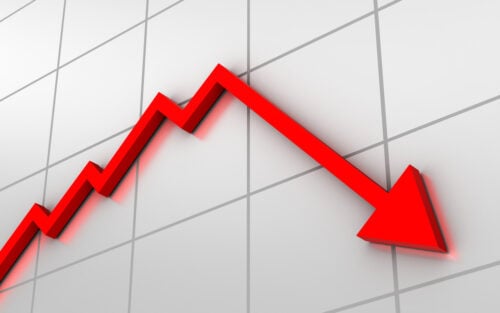
Also, keep in mind that the number of funds in an ETF portfolio depends on the investor’s risk tolerance.
For example, in a risk-averse investment strategy, 60-70% of the portfolio should ideally be in bond funds, so 2-3 funds might be enough for such an investor.
How to Invest in ETFs
ETFs are traded just like stocks, so many brokers today offer them free of commission. Here are five excellent online brokers for trading ETFs.
- E*TRADE
- Merrill Edge
- J.P. Morgan Self-Directed Investing
- Interactive Brokers
- Fidelity
All of the above offer zero commissions, excellent tools for ETF performance analysis, and some of them even have promotional schemes for new investors.
What 3 ETFs Should I Buy?
We would suggest the following three ETFs for anyone looking to build a balanced portfolio:
- Vanguard S&P 500 ETF
- Vanguard FTSE Emerging Markets ETF
- iShares Core U.S. Aggregate Bond ETF
Each one represents different types of investment vehicles and will help create a strong portfolio with limited risk.
Vanguard S&P 500 ETF
As the name suggests, the Vanguard S&P 500 ETF (VOO) tracks the S&P 500 index. It could be one of the best equity ETFs for a new investor.

The S&P 500 includes the largest companies in the US, such as Microsoft and Apple.
The ETF charges only about 0.03% of the traded value, and the fund currently manages nearly $270 billion of investor wealth.
Vanguard FTSE Emerging Markets ETF
Emerging markets are one place where you should consider putting your money in if you’re looking for the opportunity for strong returns.
This ETF tracks some of the largest indexes in Asia and Latin American countries, with about $79 billion in assets under management.
As of now, the ETF is concentrated on three countries: China, India, and Brazil.
Since both equities and emerging markets are riskier investment opportunities, it is important to hedge the portfolio with a good bond fund.
The iShares Core US Aggregate Bond ETF is a diversified fund holding both government and corporate bonds, with a current yield of about 3.2%.
It also has one of the lowest expense ratios – just 0.03%, which makes it an attractive option for investors.
Can ETFs Make You Rich?
Yes, ETFs can make an investor rich in the long run. That said, nothing is certain and there are no guarantees, even when following best practices.
It is important to invest in large amounts regularly, maintain a diversified portfolio, choose low-cost ETFs, and continue investing instead of cashing out when markets fall.
Investing regularly and starting early is the key.

Secondly, choose ETFs that have low expense ratios. Fund expenses eat into wealth, so it is important to avoid funds that have high expenses.
Thirdly, don’t cash out when the markets are falling. You may end up selling at a lower price, and the market will probably regain the losses later on.
Lastly, try to rebalance funds in accordance with investment needs.
If the aim is to become “rich,” equity ETFs should be a large part of the portfolio. However, if the goal is to have a strong retirement corpus, balancing equity with bonds could be a good idea.
Is It Better to Invest in ETFs or Individual Stocks?
It is important to invest in both individual stocks and ETFs. Both have their own strengths and weaknesses.
Stocks are generally riskier but may have high returns. In contrast, ETFs are stable but will probably never match the kind of returns Amazon or Microsoft have given to early investors.
When it comes to beating the market, buying individual stocks often provides an edge. If the idea is just to grow money steadily, an ETF portfolio will help.
Therefore, having a mix of both in your investment strategy is a great idea.
Final Thoughts: How Many ETFs Should I Own?
Creating a strong equity portfolio takes a lot of time and effort, but ETFs offer an easy and effective way to do it.
Unlike mutual funds, ETFs can be bought and sold on stock markets. Most are passive and simply trade major indexes. Their commissions and expenses are also lower.
ETFs are a good way to enter equity markets as a newbie. ETFs also exist for bond markets, commodities, and other asset classes.
It’s helpful to keep different types of ETFs in your portfolio because it reduces risk and increases the chances of better returns.
That said, over-diversification also has its pitfalls, and most experts agree that up to 4-5 ETFs are enough for most retail investors.
Investing in these funds has become very easy in recent years; most online brokers let you do it on their platforms.
Lastly, investing in ETFs alone can also make an investor rich, as long as they follow some simple thumb rules.
These include: staying invested when markets go down, putting in money regularly and generously, keeping the portfolio diversified, and choosing ETFs with a low expense ratio.

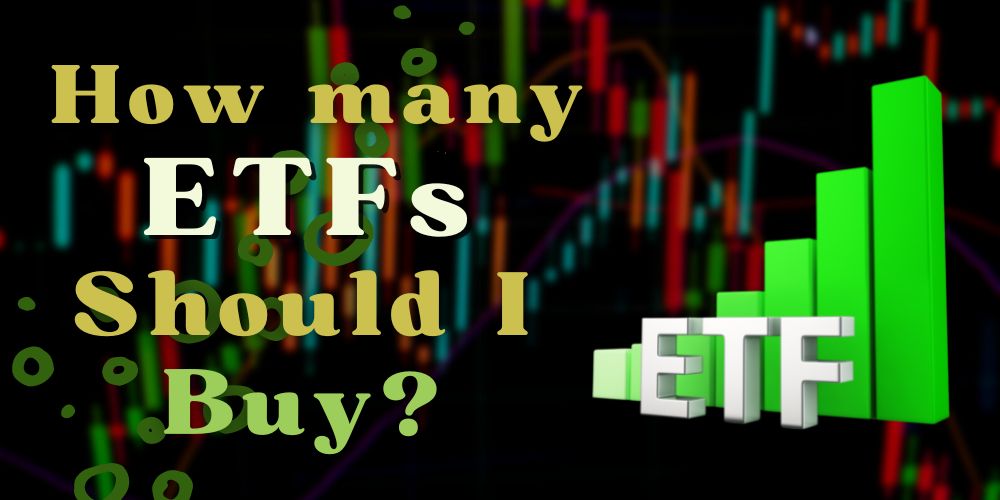
 Tags:
Tags:










